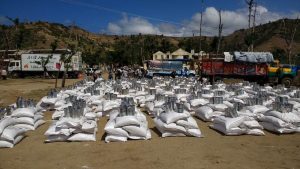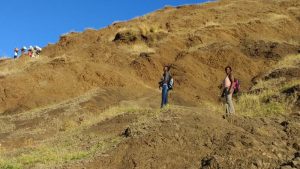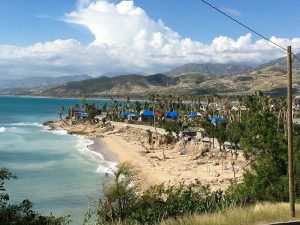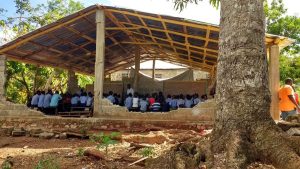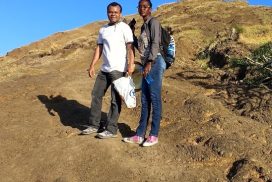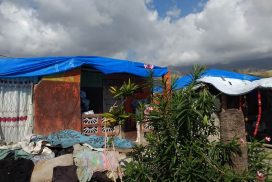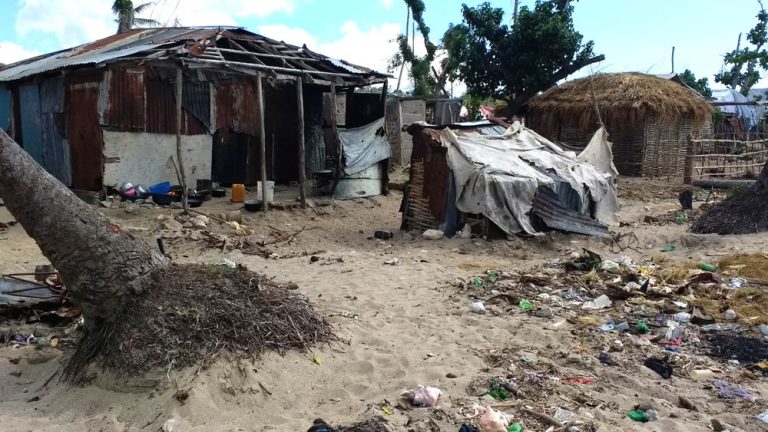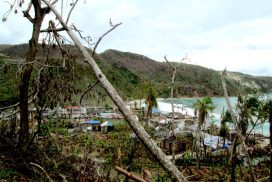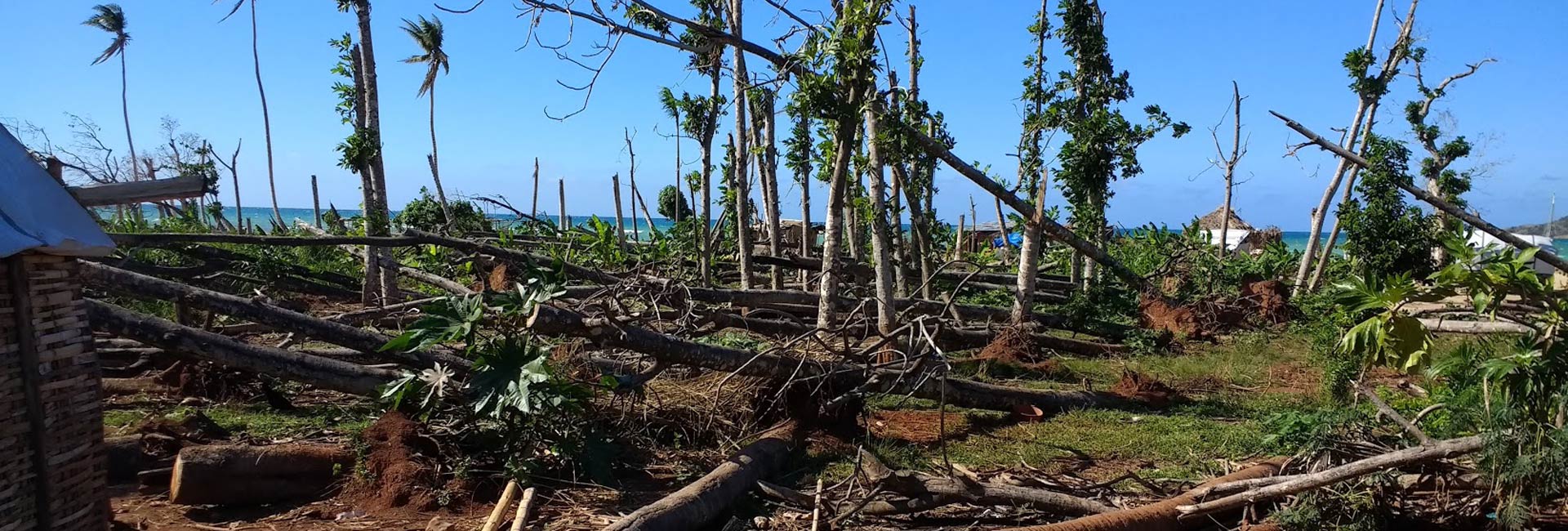
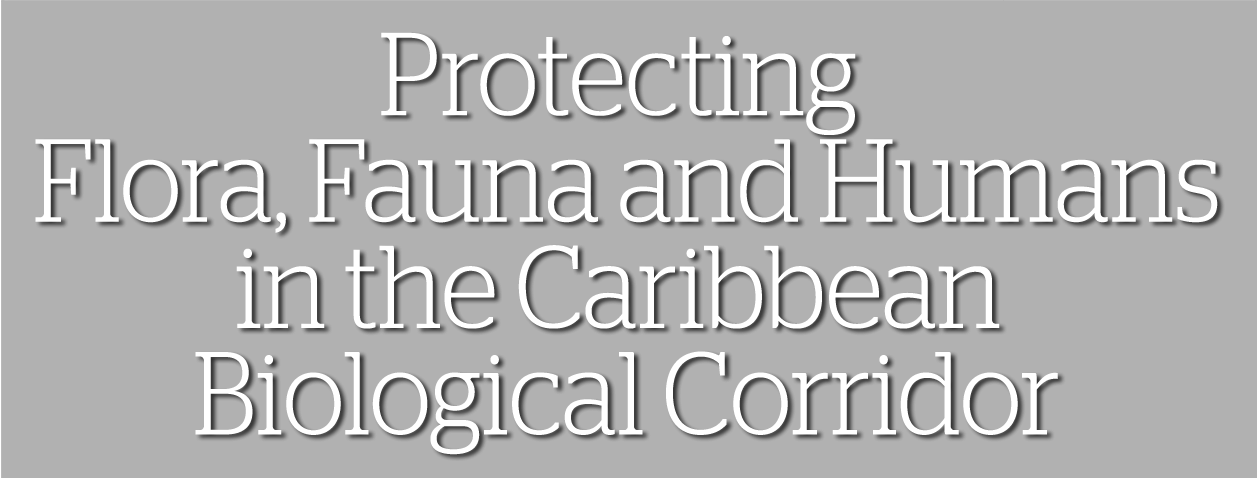
A University of Miami anthropologist is working to study and protect the unique native flora and fauna—and the people that depend on these environments—in the Caribbean Biological Corridor, which includes Haiti, Dominican Republic, and Cuba.
When Hurricane Matthew tore through the narrow channel between the eastern tip of Cuba and western Haiti in October 2016, it clobbered both nations with nearly equal force. Yet only four people in Cuba perished from the category 4 storm while more than 600 people lost their lives in Haiti.
“Both countries went through the same storm, but what a world of difference,” says Louis Herns Marcelin, associate professor of anthropology in the College of Arts and Sciences who hopes to help rural Haiti replicate some of Cuba’s strengths in disaster preparation, mitigation, and recovery.
The co-founder and chancellor of Haiti’s Interuniversity Institute for Research and Development (INURED), Marcelin is Haiti’s lead researcher on an international project aimed at protecting the endangered wealth of native flora and fauna in a small, three-country swath of the Caribbean—by nourishing the environmental consciousness and diversifying the livelihoods of the people who live among the environmental riches.
In 2009—two years after Marcelin founded INURED to train Haitian college students to research and propose fact-based solutions to their nation’s many problems—the European Union designated the eastern tip of Cuba, southern Haiti and the western mountains of the Dominican Republic as the Caribbean Biological Corridor (CBC). The designation recognized the proximity and connectivity of the three countries, their potential for cooperation and their vulnerability to hurricanes, earthquakes and other natural disasters.
About the Photo
A field of fallen trees in Haiti after Hurricane Matthew struck the Caribbean Biological Corridor in 2016. Photo courtesy of: Louis Herns Marcelin
Join the Conversation:
Follow on
Twitter:
UM College of Arts and Sciences, @UMCAS
University of
Miami, @univmiami
UM News, @univmiaminews
But it especially recognized the similarity and fragility of the CBC’s protected areas and biological treasures, which are representative of the rich biodiversity in what’s known as the insular Caribbean, one of the world’s most important biodiversity “hotspots.”
From its mountain cloud forests to its cactus scrublands, the insular Caribbean’s ecosystems cover only 1.4 percent of the Earth’s surface, yet harbor 44 percent of its plant species and 35 percent of its vertebrates. That’s three times the endemism rate of Brazil’s Atlantic forests, four times that of the tropical Andes and 12 times that of Mesoamerica.
(Story continues after photo gallery)
But the CBC’s biodiversity is threatened by extreme poverty, rampant deforestation and soil erosion, and vulnerability to natural disasters—and nowhere is that truer than in Haiti. The demand for wood as a fuel source has all but wiped out Haiti’s forests and, over the past 15 years alone, the Western Hemisphere’s poorest nation has suffered seven major disasters, including Hurricane Mathew in 2016 and the cataclysmic January 2010 earthquake in Port-au-Prince.
Which is why Marcelin’s role in the CBC is arguably the most challenging. Collaborating with biologists, health scientists, geophysicists, engineers, sociologists and agronomists in Haiti, and fellow researchers in the Dominican Republic and Cuba, he is charged with helping farmers and others who live off the land in rural Haiti mitigate risks by developing the know-how and will to change their husbandry practices, or even their livelihoods, by protecting their environment. Yet, with Haiti’s government in perpetual turmoil, there is little organized support for his mission.
“The sociopolitical instability, which has crippled Haiti’s institutions, overshadows environmental concerns and has eroded much of the hopes for this project,” Marcelin says. “Cuba is advanced in engaging local communities in protecting protected areas. The Dominican Republic is behind Cuba, but still way ahead. They understand the idea of environmental protection, and the benefits of it. Haiti does not. That means local and national governments do not factor in environmental concerns and rural communities do not participate in protecting the environment, so this is a huge problem for Haiti.”
But as daunting as the challenges are, Marcelin remains unfazed. As one of UM’s foremost Haiti experts, he has had to learn to turn even tragedies into opportunities. Today, he is supervising 30 INURED-trained researchers who have fanned out in five teams across the devastated coastal landscape of Sud and Grande Anse, where Hurricane Matthew toppled scores of tin-roofed houses, schools, most of Haiti’s fruit trees and crops, and the protected areas and natural forests in Haiti’s portion of the Caribbean Biological Corridor.
There, in Haiti’s most rural, isolated outposts, the researchers are inventorying the available assets and resources, including people, that can be engaged during the ongoing disaster recovery and reconstruction processes, and in strengthening the preparations and mitigations for the next one. There, too, they are learning the skills needed to examine Haiti’s myriad problems, and propose evidence-based solutions based on local input to resolve them.
“By focusing on local assets and access to resources, we hope to bring local populations to the core of any recovery, reconstruction, and development efforts,” says INURED coordinator Toni Cela, a postdoctoral researcher in UM’s Department of Anthropology. “This,” adds Marcelin, “will require a conscious effort to harmonize government and international organization strategies for recovery and reconstruction with environmental protection, risk mitigation and poverty reduction.”
- MAYA BELL / UM News
